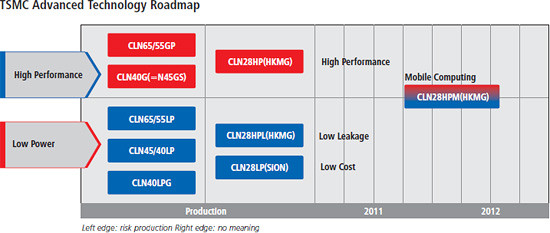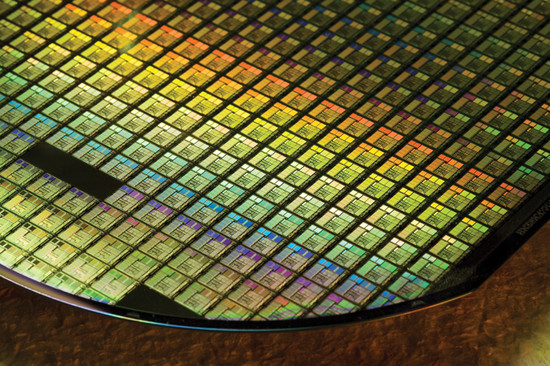Never have a new node been so anticipated as 28nm. TSMC already has more customers for its 28nm process than 40nm and the high demand makes it hard to deliver wafers in the capacities required. TSMC has raised the prices of its 28nm wafers up until the capacity meets the demand.
AMD and NVIDIA has traditionally been TSMC’s most important clients on the latest and hottest nodes and often been first to market. The hunt for higher transistor densities and lower power consumption has now spread like wildfire through the IT industry where companies making ARM SoCs and the latest customer Apple is hungering for the new node.
TSMC has a very broad product portfolio at 28nm with three different manufacturing technologies with different price options and current leakage, with a fourth coming.

28LP(SION) is the cheapest option that is best suited for low-end circuits with low power requirements and leakge is not a problem for the end-user. E.g. small logic in harddrives, motherboards and such.
28HPL(HKMG) is expected to be the most popular and is designed for high-end circuits in relation to current leakage. This is the process most ARM SoCs are built on, including Apple A6. There are rumors that some graphics circuits from AMD will use 28HPL.
28HP(HKMG) will be the most expensive manufacturing process and is for the actors that demand the best possible performance, with as low leakage as possible. The HP process is usually occupied by AMD and NVIDIA with ther graphics circuits.
The newcomer 28HPM(HKMG) will arrive in 2012. It will be a combination of 28HPL and 28HP with a direct focus on the mobile market. The clients for this process is still unclear.
About 1% of TSMC’s revenue in Q4 2011 will come from 28nm wafers, which is about 35 – 40 million dollar. This means that it will only ship 7-10 28nm wafers before the end of the year. AMD and NVIDIA wants their new graphics architectures on 28nm out in the open as soon as possible, and Apple is looking to have its new A6 SoC in quantities of million in Q2 2012.

Only 7,000 to 10,000 wafers at 28nm in 2011?
According to Semiaccurate TSMC is forced, or takes the opportunity, to raise prices of its 28nm wafers with 15-25%. The number depends on which client you speak to, and considering a wafer costs 5,000 dollar, the could render a 1,000 dollar price hike.
When AMD launched the HD 5000 series at 40nm the demand was way higher than what AMD could deliver, which was said to be because of poor capacity and yields at TSMC. With the massive demand we will see from AMD Southern Islands and NVIDIA Kepler we can only hope that TSMC is well prepared.
Source: XbitLabs





















Leave a Reply